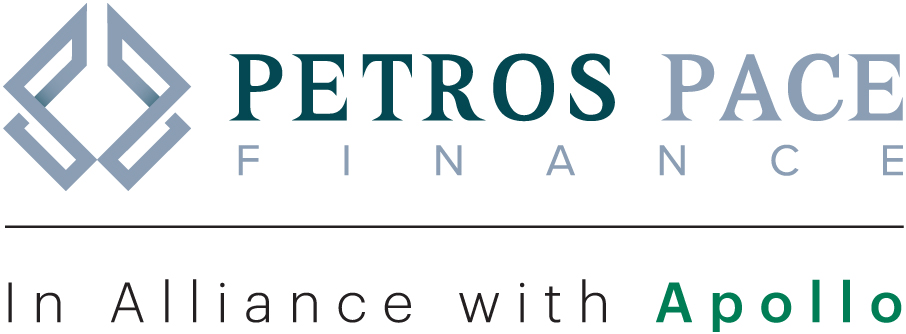
Amid growing funding gaps and increased sustainability efforts, C-PACE is becoming a critical part of the capital structure, says Mansoor Ghori, chief executive officer and founder of Petros PACE Finance
Petros PACE Finance is expanding its C-PACE lending as commercial real estate sponsors seek to upgrade the resiliency and efficiency of their port-folios, according to Mansoor Ghori, chief executive officer and founder.
The firm has originated more than $2 billion of directly-funded balance sheet C-PACE transactions since launching in 2016. The Austin, Texas-based firm – which was acquired by Apollo Global Management in 2022 – is active across the US, providing long-term, fixed-rate financing for energy efficiency, water efficiency, renewable energy and resiliency projects nationwide.
Demand for C-PACE – or Commercial Property Assessed Clean Energy, a government-backed tool which enables commercial real estate owners to borrow capital to finance energy, structural and other improvements on properties – has gathered momentum in recent years.
Ghori explains how C-PACE has steadily evolved from a novel concept that often required some explanation to a more widely accepted and stable segment of the capital stack.
“It’s completely changed,” says Ghori. “In the old days, PACE was always the last to the party after people would fill out their capital stack.
Now, what we’re seeing is property owners coming to us as PACE lenders first, getting our terms, then going to market to find lenders and other equity providers that can work around the PACE terms.” With Petros providing capital for projects sized between $500,000 and $200 million-plus, Ghori predicts further growth in this space, driven by increased sustainability requirements and more flexible lending needs as well a greater institutionalization of the product.
“With banks playing less of a role in financing construction deals in CRE at this point, as they’re still dealing with balance sheet issues, there’s a need for capital to be available for those borrowers to complete projects, or start new projects,” he adds. “PACE is now increasingly able to fill that gap.”

Deal in focus
Petros notched a rare mid-project refinancing for a Los Angeles luxury property
The firm recently closed a deal in Los Angeles on 1410 Highland, a six-story, fully furnished luxury micro unit property in Los Angeles. The sponsors of the 49-unit property were dealing with cost overruns and Petros was able to come in and refinance out a senior lender mid-project.
“That’s something that doesn’t happen very often – typically people come in at the very beginning or very end. We helped the sponsor get the senior lender paid down and got to work with their senior lender to do an extension and a rate reduction. We were then able to free up lending capacity for that lender to do another project with the same sponsor,” he says. “The bank was happy, we were happy, the borrower was happy, and it hit all the things that PACE can do to fill out a capital stack and provide value.”
The PACE measures funded included the building envelope, lighting, plumbing, HVAC, elevators, and seismic resiliency.
Q Can you give a brief overview of Petros and its business within the C-PACE market?
We’re dedicated primarily to commercial PACE at this point. We are doing ransactions all over the country, wherever PACE is available. Right now, it’s various versions of C-PACE, but overtime that will evolve into a more diversified real estate platform.
Q The C-PACE market is not a one-state-fits-all solution – it’s not available in every state, and each state seems to have tailored their programs for what is important to that state. Why is that?
If you look across the country, thereare various programs that are specific to what’s needed in those states. In California, for example, you can do resiliency projects, such as seismic updates, which aren’t necessarily applicable in, say, Texas or North Carolina. Fires in California have also become a big challenge – if California can fire-harden buildings, hopefully insurance rates will go down as well.
Then there’s Florida, which has many hurricanes and other water related issues, and so you can do hurricane resistance as part of that state’s resiliency program. In Texas, meanwhile, you can do water conservation. The things that are specifically important to various states are being approved as PACE-eligible in those states.
Q You talk to a wide range of borrowers in a wide range of regions. What is the full scope of problems you can help people solve?
Building supplies have gotten very expensive in the past few years due to rate increases and projects now have significant costs. There are also financing gaps due to banks being more conservative. Banks used to lend at 70-75 percent; now they’re lending at 50-55 percent leverage – that gap has to be filled so me how. PACE actually fits in that same spot, and it’s cheaper than mezzanine financing. We’ve also seen borrowers use PACE to refinance higher cost sources of capital.
As rates went up, banks have encountered balance sheet issues, and now have a lot of problem loans on their books. They don’t have capacity to lend any more until they get those things cleaned off. We’re now being called directly by banks to help them reduce their exposures on these properties. That then gives us a definite in to the deal, as well as automatic consent, while also giving the bank the ability to lend on other projects.
Another very interesting development is that, with interest rates now higher, lenders are making property owners buy interest rate caps. They’re only good for one year, and as many of them have been running out, they’ve had to buy new caps – and those new caps are not cheap. So they’re using PACE funds to buy new interest rate caps.
Q New York has Local Laws 97 and 11, and other major cities where there is a significant concentration of institutional real estate are also putting into place similar resiliency programs. How is this affecting the need for C-PACE? Is it helping push forward the product?
Local Law 11 is more façade-based, and it’s not as robust as Local Law 97, but it’s definitely creating a high need. The problem is there’s a difference between need and access. We have a very high need, but we don’t yet have access, until New York gets its ducks in a row. But we’re getting closer – Petros has been working with the local government there to get one deal over the line, but it’s taking an extended period of time – literally months. They’ve got to get the program efficient and ready to go. Once that happens, the need will then start matching the access, which will help growth.
Q Where are you most active right now? Where are you seeing the most traction?
California and Florida have been big markets for us. Surprisingly, we’ve also done a ton of deals in Utah as well. That market turned on about three or four years ago, and we’ve done about six or seven projects there, sized in the hundreds of millions of dollars.
“In the old days, PACE was always the last to the party after people would fill out their capital stack. Now, what we’re seeing is property owners coming to us as PACE lenders first”
MANSOOR GHORI
Petros PACE Finance
Q Why do deal sizes among C-PACE providers seem to be getting larger?
Historically, PACE was a mid-market product, with deals less than $100 million. Now you’re seeing deals that are well over $100 million – around $200 million, $250 million. The PACE market has become bifurcated. There’s this mid-market, which is less than $100 million, and then there’s this institutional side, which is greater than $100 million. The PACE market is moving to the institutional side from the middle market side, and with that, you’re going to see larger transactions. Average deal sizes are going to go up significantly. Three or four years ago, our average deal size was maybe $3 million. Right now it is $25 million-$26 million. Three or four years from now, it could be closer to $100 million.
PACE is becoming much more institutionalized, with larger players now accepting it as part of their cap stack. These projects need this kind of financing because they don’t have capital access. Equity is very expensive. Mezzanine is very expensive. Bank lending has been non-existent for a couple years now, and debt funds have stepped in to take their place. But debt funds are very expensive relative to a traditional bank loan. For us, we’re now on par with bank loans, or in some cases even cheaper. We are very accretive to the capital stack now, and can bring down the total cost of funding.
Q Can you give a snapshot of the range of financing you can provide?
On the lower side, we probably wouldn’t look at a transaction that’s below half a million dollars. On the upper end, we’ll do deals and hold them on our balance sheet up to $200 million. If it’s greater than $200 million, then we may syndicate the pieces of it out. We don’t necessarily have a capacity constraint – we’ve got access to billions of dollars capital from our existing investors, including our parent company Apollo. We like to make sure it’s diversified when we do deals.
Q There’s an expectation that the C-PACE market is poised for significant expansion in the next cycle, in some ways similar to where the CMBS market was in the mid-1990s. What’s your view?<./h4>
I think there’ll be a huge increase in PACE in the coming years. This year there has been over $2 billion worth of PACE done – the closest we had to that was around $1.25 billion last year.There’s probably been $10 billion ofPACE done since it came into existence, and 90 percent of that has been done in the last three years. Part of it has been this bifurcation – we’re seeing much larger deals being done, driving significant growth in the market.
